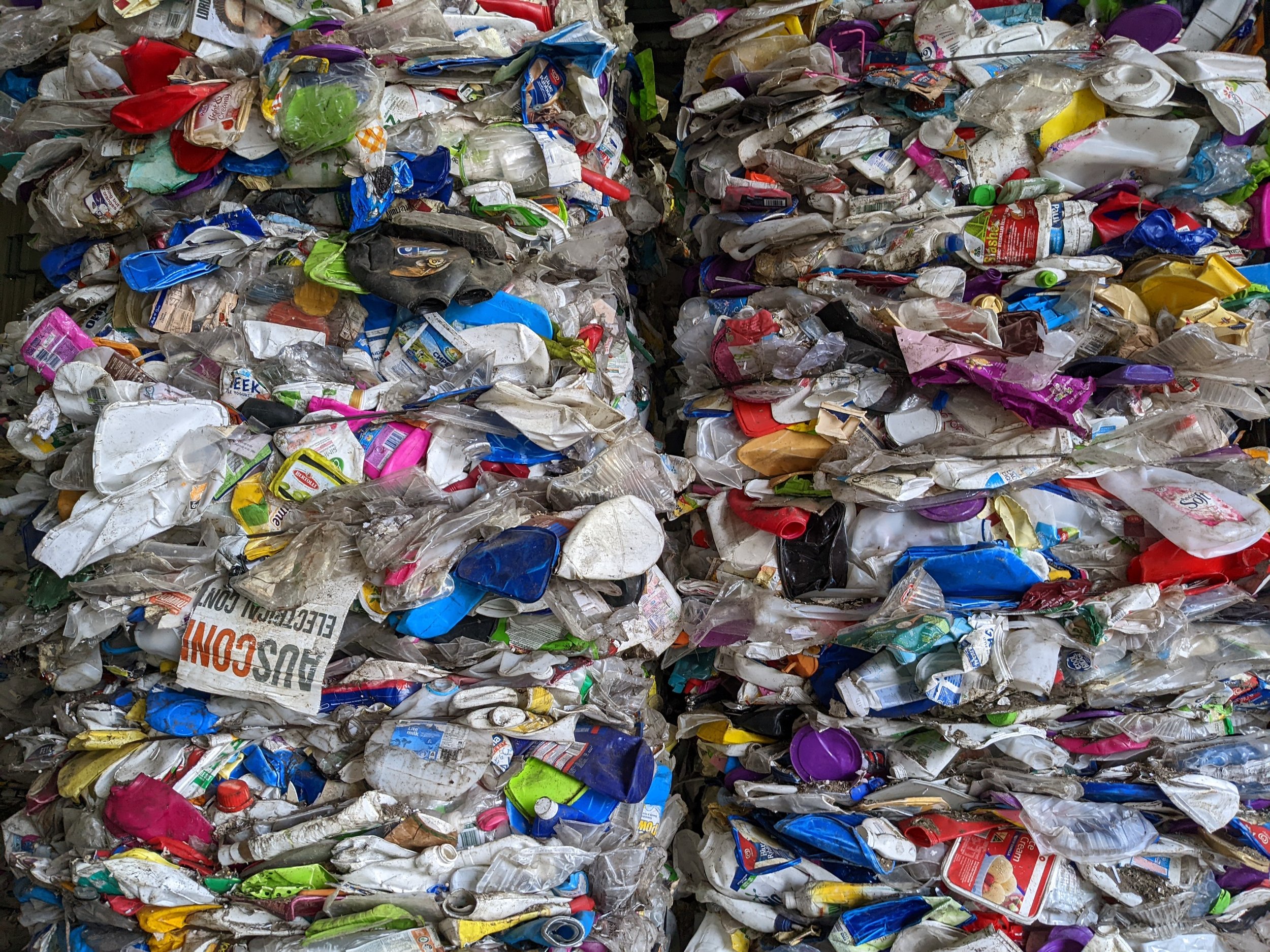Recently, Shrunk had the opportunity to visit a plastics recycling facility on the outskirts of Melbourne. The size and scale of the operation was overwhelming and we thank our hosts for the amazing tour!
The facility takes a mixed-plastics waste stream and, after a complex series of operations, produces recycled plastic. A network of conveyor belts carries the plastic waste through each processing stage, with specialised robots operating within protective cages to separate each plastic type [1]. The waste is cleaned and decontaminated before high-temperature processes melt and reform the material into recycled plastic pellets and flakes. This finished product is ready to be used as an input into new production.
This facility is an excellent example of the processing level and technology required if we are to move from our linear 'take-make-waste' economy towards something more circular [2,3]. In a ‘circular economy’, materials are continuously cycled within the system, which minimises the extraction of virgin material and minimises material sent as waste to landfill.
While impressive, this complex process of separating and remaking plastics is not ‘free’, the process of sorting and remelting can be energy intensive. One of the reasons sorting and separating consumes energy is that we are working against the mixing entropy [4]. The ‘mixed-plastics’ waste stream is in a disordered state, in the thermodynamic sense, whereas the sorted and separated result is highly ordered. We need to do work on the system to undo the mixing, this work requires energy. Further, because the waste stream can be very contaminated (e.g. drink bottle labels and organics are forms of contamination), a certain portion of the waste stream is essentially un-sortable and is diverted to landfill.
During our tour we noticed the large number of HDPE and PET plastic containers that had arrived at the facility – milk bottles, laundry detergent containers and shampoo bottles. An alternative to sorting and remelting these containers is to design them for reuse, rather than recycling. Reuse can be designed in a number of ways, including: refillable by bulk container (customer brings own container to store), returnable packaging (customer returns and retailer or manufacturer cleans and reuses), reusable transit packaging (pallets or boxes used for shipping are returned to the freight company) [5]. These designs are not new, though currently not prevalent. Reuse can come with its own challenges however, for example the energy and water consumption used during food container cleaning can be significant. These issues highlight the importance of the produce design phase in reducing environmental impacts from material use.
Resources
[1] Plastic ID codes: https://chemistryaustralia.org.au/Content/PIC.aspx
[2] https://www.gsb.stanford.edu/insights/replacing-take-make-waste-model-sustainable-supply-chains
[3] Circular Economy Victoria: https://www.cev.org.au/
[4] Gutowski & Dahmus, 2005, Mixing Entropy and Product Recycling, https://web.mit.edu/ebm/www/Publications/Gutowski_ISEE_2005.pdf
[5] Coelho, PM, 2021, Sustainability of reusable packaging–Current situation and trends, Resources, Conservation & Recycling: X
Cross-posted from the Shrunk Labs blog: https://shrunk.ai/blog/f/waste-plastics-and-the-circular-economy
